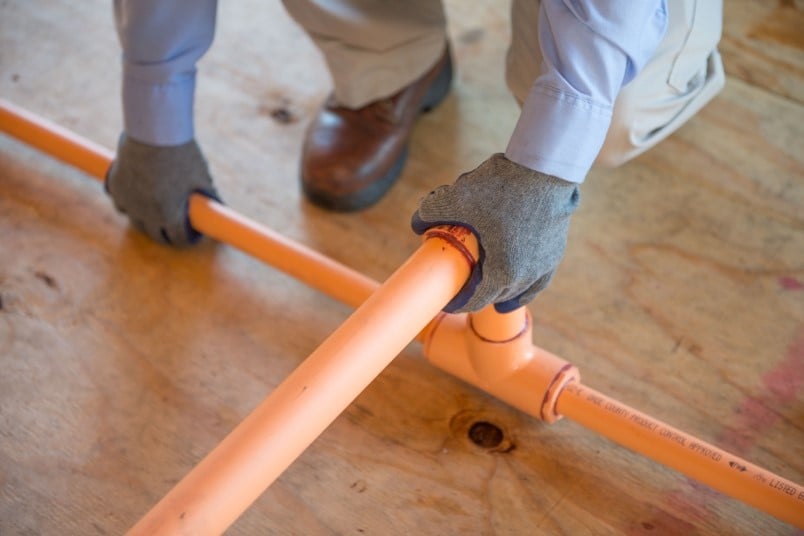5 Keys to Ensuring Solvent Cement Safety When Installing BlazeMaster® CPVC Fire Protection Systems
Safety is always the first priority when installing BlazeMaster® Fire Protection Systems. We sometimes get questions about the best safety practices for using solvent cement, which joins pipe with fittings to create durable bonds that ensure the fire sprinklers work as planned.
Solvent cement is safe to use, and that’s based on our 60 years of experience in working with CPVC and solvent cements. It’s a low-VOC material, which means it emits relatively low amounts of volatile organic compounds. We work closely with our partner manufacturers to support extensive safety testing, beyond what is required by law. The U.S. Environmental Protection Agency, which evaluates health effects of long-term exposure to products, placed solvent cement in its second-lowest category.
Why Use Solvent Cement?
While the terms “solvent cement” and “glue” are often used interchangeably, they work in much different ways. Glue basically sticks CPVC together. When a strong enough force acts on a joint, the bond can easily break.
Solvent cement, on the other hand, fuses the pipe and fittings together. The solvents soften and dissolve the top layer of the CPVC so that the molecules entangle to create a permanent bond. As a result, the joints are the strongest parts of a BlazeMaster CPVC fire sprinkler system and ensure a long lifetime of performance.
5 Keys to Safety
Proper handling of CPVC and personal protective equipment are key elements of ensuring safety while working with solvent cement.
- Goggles. Eye protection is essential. Even if the installer is wearing goggles properly, know the manufacturer’s guidelines for how to address any incident where solvent cement gets in someone’s eyes.
- Masks. It’s important to wear a mask when cutting pipe, and just about anything will work. When working with solvent cement, a mask with a carbon filter offers additional safety and will reduce the odor.
- Protective clothing. Always wear gloves to protect the skin and prevent itching, burning, or flaking of the skin. Consider additional protective clothing, such as long sleeves and aprons, for further protection.
- Ventilation. Always use in an area with good airflow. Use fans when possible to keep air moving.
- Storage. Keep solvent cement in a cool, dark location away from open flames and any sources of heat, such as burning torches or heaters. To ensure the solvent cement works as designed, do not let it freeze. Do not smoke when applying solvent cement.
Applying Solvent Cement
While safety always comes first, it’s also important to keep best practices in mind to ensure a fire protection system works as designed for decades to come. Here’s a quick review on how to use solvent cement:
- Use only BlazeMaster solvent cement approved for use in fire protection systems.
- Review and follow the manufacturer’s installation instructions.
- Do not use solvent cement that has exceeded its shelf life or has become discolored or gelled.
- Apply solvent cement to clean pipe and fitting surfaces using a natural bristle brush or dauber that is half the size of the pipe diameter. Always use a dauber on pipe sizes below 2 inches (50 mm).
- Apply a heavy, even coat to the outside of the pipe end, then a medium coat inside the fitting socket. If the pipe is larger than 2 inches (50 mm), apply a second coat on the pipe end. Do not allow the solvent cement to puddle within the pipe or fittings.
- Insert the pipe in the fitting socket immediately after application and rotate a quarter turn. Hold for 10 – 30 seconds to allow the pieces to set.
- Ensure there is a bead of cement around the pipe and fitting juncture, a sure sign that enough cement was used. Wipe off any excess cement.
- Follow the manufacturer’s recommended cure times, keeping in mind that cure times vary based on pipe size, temperature, humidity, and tightness of fit.
That’s all there is to it. It’s a one-step process that is faster and easier than installing heavy steel pipe that requires welding tools, pre-fabrication, and other cumbersome processes. For more information, download our Complete Guide to Solvent Cement. As always, give us a call if you have questions.

